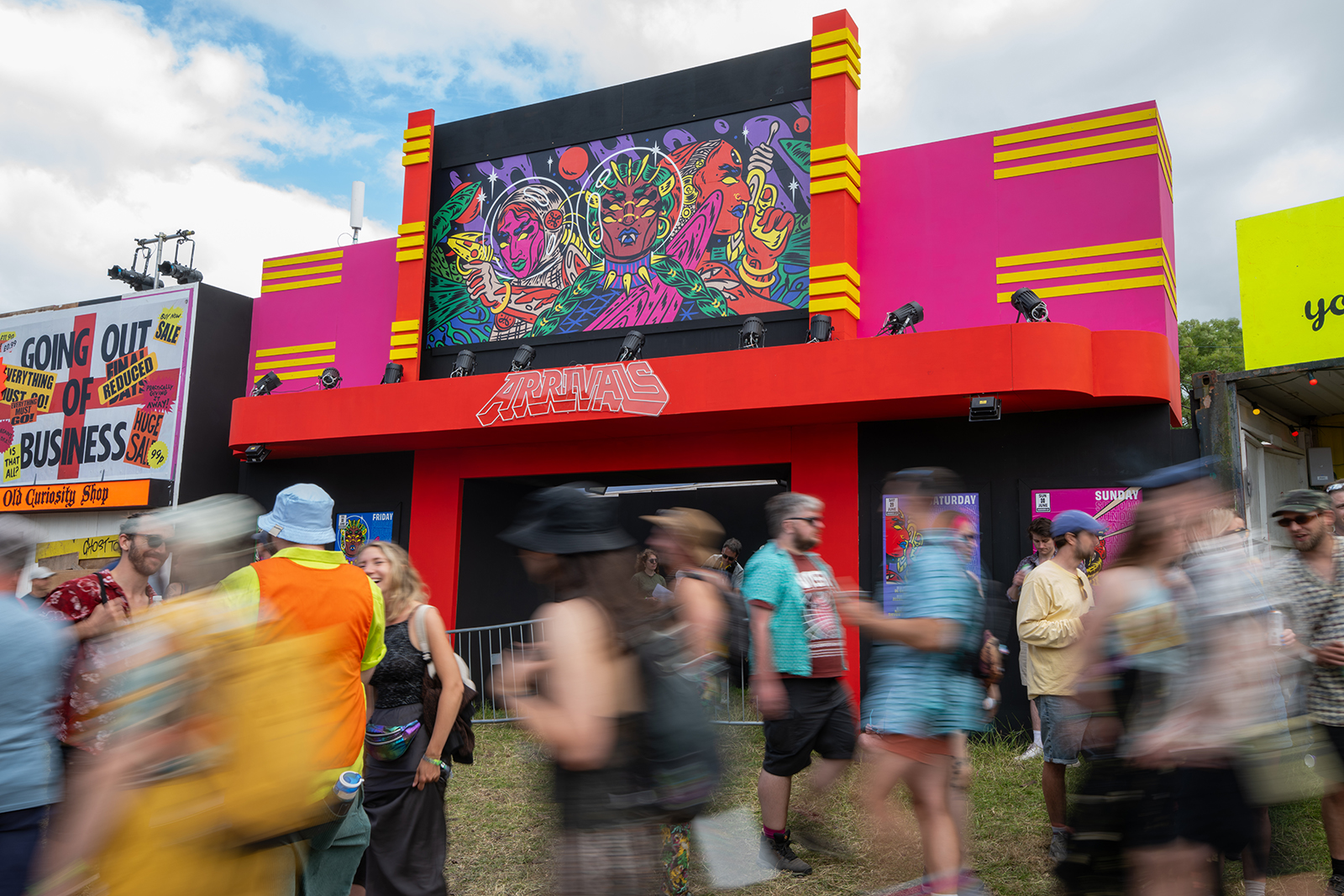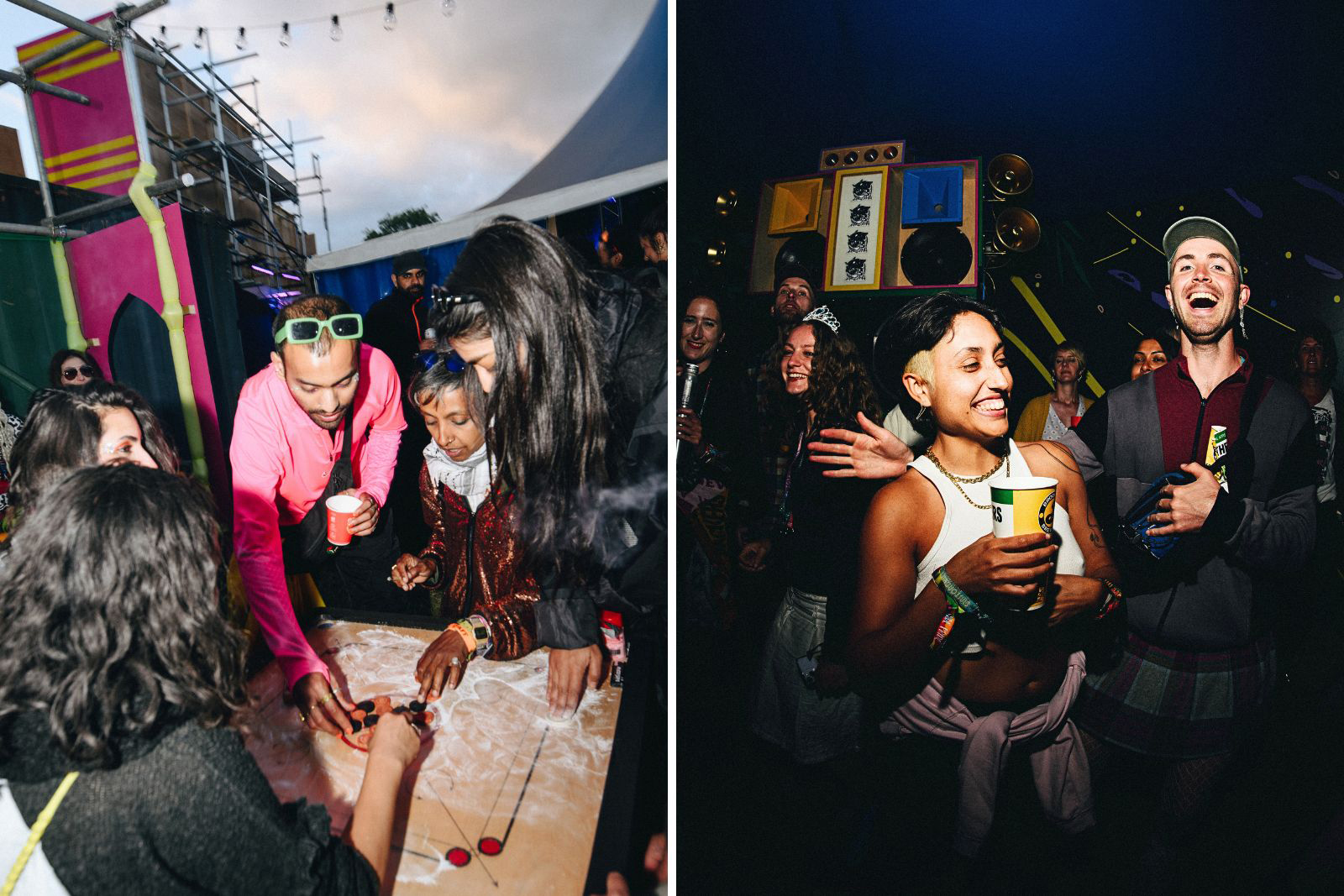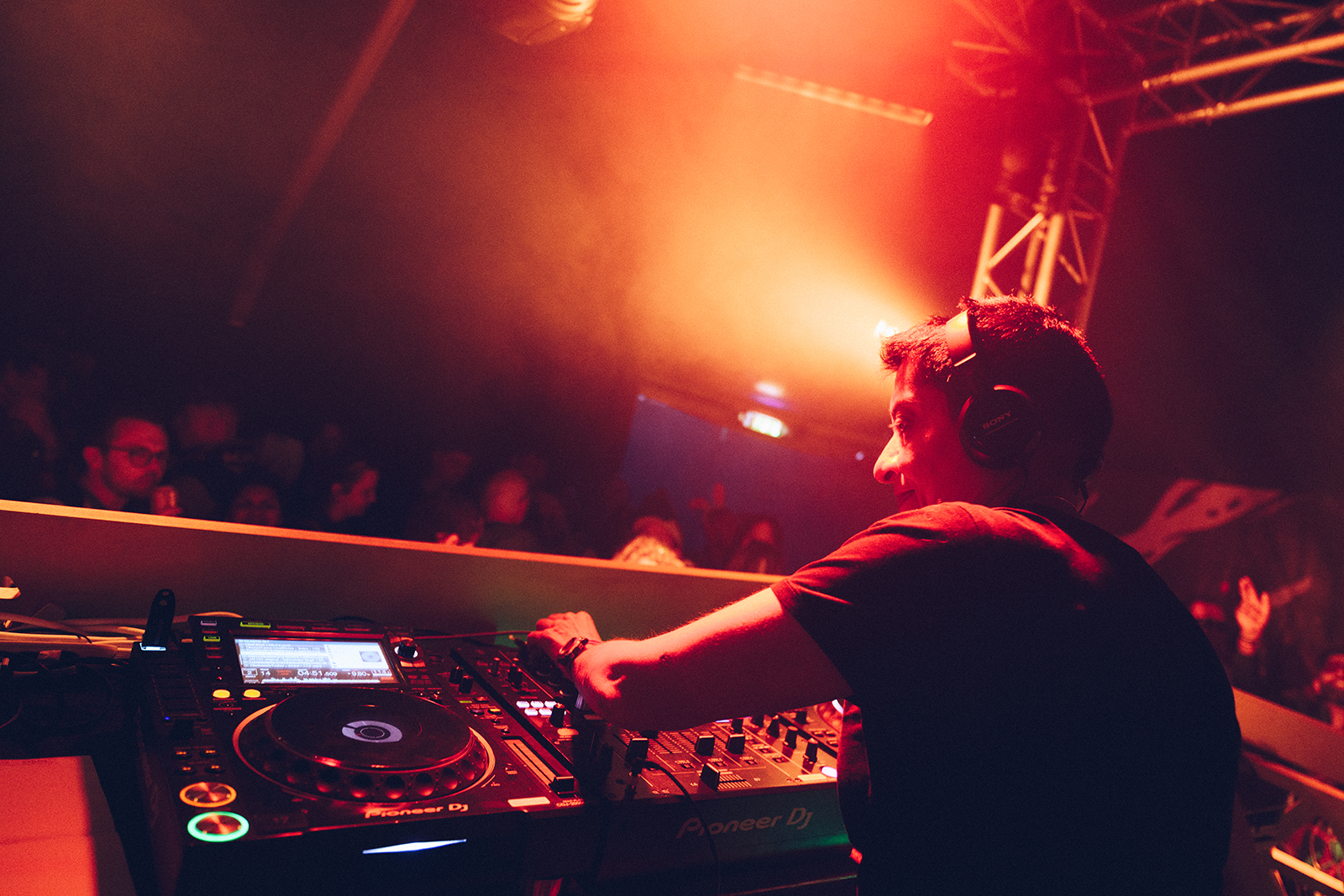South Asians have truly arrived at Glastonbury
A vibrant space for established and up-and-coming talent thrills crowds at the UK’s biggest festival — and that’s just the start of it
–

It’s Thursday evening at Glastonbury 2024 and a crowd of dancers are screaming along to Cornershop’s Brimful of Asha, arms in the air and smiles beaming. They are gathered at the opening night of Arrivals, the festival’s first ever dedicated South Asian space, created and built by an entirely South Asian team.
Based in the Shangri-La area, part of Glastonbury’s night-time offering, a lengthy queue formed outside Arrivals more than an hour before the doors opened. By the time I got there, the excitement was palpable.
Throughout its 54-year history, Glastonbury has provided an important platform for talent from around the globe, including artists from the UK’s South Asian diaspora and South Asia itself. Everyone from Nitin Sawhney and Nusrat Fateh Ali Khan to Riz Ahmed and Anoushka Shankar has played Worthy Farm at some point.
“When my mum was in her 20s, she performed at Glastonbury as part of a kathak troupe,” says Kiran Kotecha, also known as DJ and producer yourboykiran, who played a Saturday-night slot at Arrivals. “She was in this dance group from Woking, and I think they were the opening act for Peter Gabriel.”
When Kotecha’s mum performed, the other women in her group were white.
“I think in the 80s and 90s, maybe through to the 2000s, there was this fascination with other cultures,” he says. “Glastonbury and Womad were places you would go to experience these things. I have a feeling that South Asian representation historically has been linked with offering something cultural or heritage-focused in these places.”
In 2024, things are a little different. For the past couple of years, Glastonbury has brought in South Asian music promotion and DJ collectives including Dialled In, Daytimers and Going South to select lineups for areas across the festival. At those sessions, audiences have been just as likely to hear Sugababes edits and wobbly dubstep tracks as classic bhangra joints.
This year, those three organisations joined forces to bring Arrivals to life. After getting the green light from the Shangri-La’s creative director Kaye Dunnings, they began to conceptualise a space to showcase artists and DJs of South Asian origin. More than that, though, the behind-the-scenes staff at Arrivals — from artist liaisons to creative directors, sound operators and set designers — all share similar backgrounds. Even the sound system was built by Vedic Roots, a reggae collective from Southall, west London.
As a DJ, Kotecha is known for his high-energy blends of pop and dance music from around the world. For him, the holistic view taken by the organisers is what makes Arrivals truly special.
“Having South Asian involvement among people who run things on the ground is so incredibly important,” he says. “If you think about people who go on to run festivals and run stages, those are the roles they come from. So, it’s not just setting a path for this year. In 10 years’ time, there could be somebody who was working on Arrivals who’s working on programming the Pyramid stage.”

Glastonbury’s 200,000-strong audience didn’t have to wait that long to see the effect of Arrivals on the festival’s programming. A glance at the lineup of many of this year’s stages — particularly in the dance music areas — showcased a healthy mix of South Asian-origin talent, both budding and established.
“It’s not just limited to this one space,” says up-and-coming DJ and producer Nadī — real name Samia Ahmed — who also played Arrivals. “It’s awesome to see so many South Asians across every stage. It’s great that they wanted to do something big this year, to have this big hurrah and foster South Asian talent, even if they’re not necessarily just playing South Asian music.”
That increasing musical freedom has also been warmly welcomed by more established names. Turntablist, broadcaster and producer DJ Ritu has been at the forefront of the UK South Asian scene since the 1980s and believes that projects such as Arrivals offer a refreshing and long-overdue shift in representation.
“I’m particularly excited about the fact that, at last, there’s an opening up for South Asian creativity and artistry,” she says. “I think there’s a recognition that we are capable of being into diverse genres of music, rather than that we should only play at melas, or that all we do is bhangra or Bollywood. It’s really about time that that perception changed.”
Ahmed is particularly happy to be one of three British-Bengali women on the lineup for Glastonbury 2024, along with drum’n’bass DJ Mixtress and jazz-R&B singer Tara Lily. “I think when people hear the words ‘South Asian space’, they assume it just means diaspora music, but it’s a space for everyone,” she says.
Just as the eclectic sounds of Arrivals perfectly represented the cultural lives of many young British South Asians, so did the visuals. The bold, colourful images of Goa-based artist Osheen Siva, in particular, featured everything from tigers to sci-fi goddesses wielding laser guns, offering a cliche-busting subversion of old Bollywood posters and comic book aesthetics.
“We’re designers in our own right and we are South Asian. That’s what makes this South Asian design,” says Shirin Naveed, who helped to curate the space. ”We’re not doubling down too much on having the design be really explicitly South Asian-looking, we’re very much not trying to orientalise ourselves.”

When I entered the welcome calm of the Arrivals garden, I immediately noticed the woven benches and low tables fashioned from carrom boards. Inside, the walls were covered in Siva’s artwork, green leaves and tendrils wove through the bright yellow latticed wood of the DJ booth and a mirrored surface dominated the rear of the space, offering a hazy reflection of the dancers.
While much of the design created an atmosphere of joyous fantasy, elements of it were also haunting and humbling. The neon-lit facade, in particular, referenced the architecture of Dominion Theatre in Southall: the cinema outside which 18-year-old Gurdip Singh Chaggar was fatally stabbed in 1976, catalysing years of anti-racist organising by British South Asians.
It was a stark reminder of how much we have fought to be here and of how much we have built and given to a country that has often not wanted us. Arrivals, however, announced our presence loudly and offered a real stake in the future, both of Glastonbury and many other cultural events.
While DJ Ritu’s set provided a beautiful, spirited opening, with the crowd throwing up gunfingers for the late Punjabi rapper Sidhu Moose Wala’s Goat and waving their hands coyly for edits of Bollywood classics including Ila Arun’s Choli Ke Peeche, the forward-looking nature of Arrivals was inescapable. There were gleaming beats from rising North American production duo Baalti, the unmatched euphoria of a Manara DJ set, even Dialled In co-founders Provhat and Papa Don playing heady cuts of Charli XCX and Jai Paul — both artists of South Asian heritage.
But that was not all. South Asian artists claimed their rightful places across the festival, from the packed-out back-to-back DJ set by Ahadadream, Raji Rags and Nikki Nair on the Lonely Hearts Stage to Asha Puthli’s dreamy performance at West Holts and Arooj Aftab weaving her magic in The Park. Arrivals gave South Asian music its own place to land at Glastonbury this year, unbound by genre or expectations of identity. As the names of artists and promoters spread across a growing number of stages, it’s clear they are capable of going anywhere.
Topics
Get the Hyphen weekly
Subscribe to Hyphen’s weekly round-up for insightful reportage, commentary and the latest arts and lifestyle coverage, from across the UK and Europe
